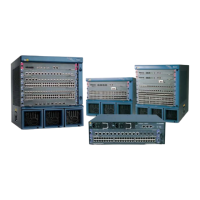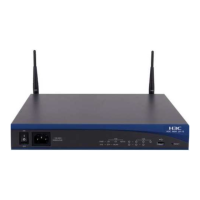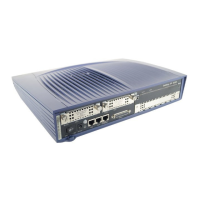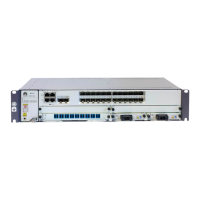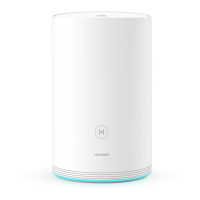NOTE
The queue length cannot be set on G48SBC boards and W series boards.
----End
2.4.4 Configuring Traffic Shaping in an Interface Queue
This section describes how to configure traffic shaping, enable traffic shaping in an interface
queue, and set traffic shaping parameters.
Context
To perform traffic shaping for packets of a certain type of services on an interface, perform this
procedure.
Before configuring traffic shaping in an interface queue, you need to map priorities of packets
to PHBs based on simple traffic classification or re-mark the internal priorities based on complex
traffic classification. Different services can enter different interface queues.
To set the same queue shaping rate on multiple interfaces, perform the configuration on the port
group to reduce the workload.
NOTE
For details about priority mapping based on simple traffic classification, see Configuring Priority
Mapping Based on Simple Traffic Classification
For details about internal priority re-marking based on complex traffic classification, see Creating a
Traffic Policy Based on Complex Traffic Classification.
Traffic shaping cannot be configured by using a port group on W series boards.
Procedure
Step 1 Run:
system-view
The system view is displayed.
Step 2 Run:
interface interface-type interface-number
The interface view is displayed.
Or, run:
port-group port-group-name
The port group view is displayed.
NOTE
You need to create a port group before performing this task. For details about how to create a port group,
see Configuring the Interface Group in the Quidway S7700 Smart Routing Switch Configuration Guide -
Ethernet.
Step 3 Run:
qos queue queue-index shaping cir cir-value pir pir-value [ cbs cbs-value pbs pbs-
value ]
The rate for traffic shaping in an interface queue is set.
Quidway S7700 Smart Routing Switch
Configuration Guide - QoS 2 Traffic Policing and Traffic Shaping Configuration
Issue 01 (2011-07-15) Huawei Proprietary and Confidential
Copyright © Huawei Technologies Co., Ltd.
61
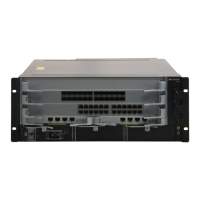
